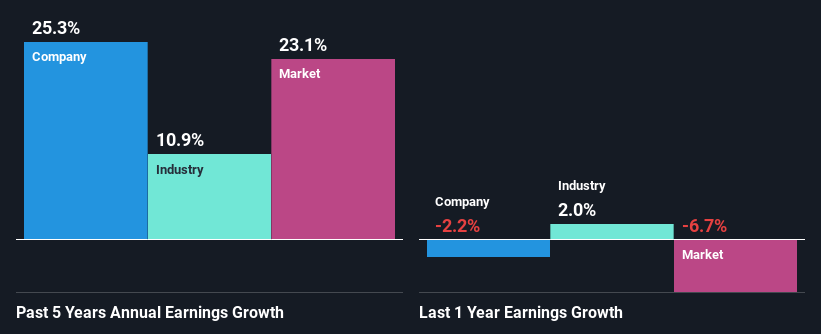Are Strong Financial Prospects The Force That Is Driving The Momentum In Loblaw Companies Limited's TSE:L) Stock?
Loblaw Companies (TSE:L) has had a great run on the share market with its stock up by a significant 6.6% over the last month. Given that the market rewards strong financials in the long-term, we wonder if that is the case in this instance. Particularly, we will be paying attention to Loblaw Companies' ROE today.
ROE or return on equity is a useful tool to assess how effectively a company can generate returns on the investment it received from its shareholders. In short, ROE shows the profit each dollar generates with respect to its shareholder investments.
Check out our latest analysis for Loblaw Companies
How To Calculate Return On Equity?
The formula for return on equity is:
Return on Equity = Net Profit (from continuing operations) ÷ Shareholders' Equity
So, based on the above formula, the ROE for Loblaw Companies is:
19% = CA$2.1b ÷ CA$12b (Based on the trailing twelve months to October 2023).
The 'return' is the income the business earned over the last year. So, this means that for every CA$1 of its shareholder's investments, the company generates a profit of CA$0.19.
What Has ROE Got To Do With Earnings Growth?
Thus far, we have learned that ROE measures how efficiently a company is generating its profits. We now need to evaluate how much profit the company reinvests or "retains" for future growth which then gives us an idea about the growth potential of the company. Assuming everything else remains unchanged, the higher the ROE and profit retention, the higher the growth rate of a company compared to companies that don't necessarily bear these characteristics.
Loblaw Companies' Earnings Growth And 19% ROE
At first glance, Loblaw Companies seems to have a decent ROE. Even when compared to the industry average of 17% the company's ROE looks quite decent. Consequently, this likely laid the ground for the impressive net income growth of 25% seen over the past five years by Loblaw Companies. We reckon that there could also be other factors at play here. For instance, the company has a low payout ratio or is being managed efficiently.
Next, on comparing with the industry net income growth, we found that Loblaw Companies' growth is quite high when compared to the industry average growth of 11% in the same period, which is great to see.
Earnings growth is an important metric to consider when valuing a stock. The investor should try to establish if the expected growth or decline in earnings, whichever the case may be, is priced in. Doing so will help them establish if the stock's future looks promising or ominous. One good indicator of expected earnings growth is the P/E ratio which determines the price the market is willing to pay for a stock based on its earnings prospects. So, you may want to check if Loblaw Companies is trading on a high P/E or a low P/E, relative to its industry.
Is Loblaw Companies Using Its Retained Earnings Effectively?
Loblaw Companies' three-year median payout ratio is a pretty moderate 27%, meaning the company retains 73% of its income. By the looks of it, the dividend is well covered and Loblaw Companies is reinvesting its profits efficiently as evidenced by its exceptional growth which we discussed above.
Besides, Loblaw Companies has been paying dividends for at least ten years or more. This shows that the company is committed to sharing profits with its shareholders. Based on the latest analysts' estimates, we found that the company's future payout ratio over the next three years is expected to hold steady at 25%. Accordingly, forecasts suggest that Loblaw Companies' future ROE will be 21% which is again, similar to the current ROE.
Conclusion
Overall, we are quite pleased with Loblaw Companies' performance. Specifically, we like that the company is reinvesting a huge chunk of its profits at a high rate of return. This of course has caused the company to see substantial growth in its earnings. With that said, the latest industry analyst forecasts reveal that the company's earnings growth is expected to slow down. Are these analysts expectations based on the broad expectations for the industry, or on the company's fundamentals? Click here to be taken to our analyst's forecasts page for the company.
Have feedback on this article? Concerned about the content? Get in touch with us directly. Alternatively, email editorial-team (at) simplywallst.com.
This article by Simply Wall St is general in nature. We provide commentary based on historical data and analyst forecasts only using an unbiased methodology and our articles are not intended to be financial advice. It does not constitute a recommendation to buy or sell any stock, and does not take account of your objectives, or your financial situation. We aim to bring you long-term focused analysis driven by fundamental data. Note that our analysis may not factor in the latest price-sensitive company announcements or qualitative material. Simply Wall St has no position in any stocks mentioned.

